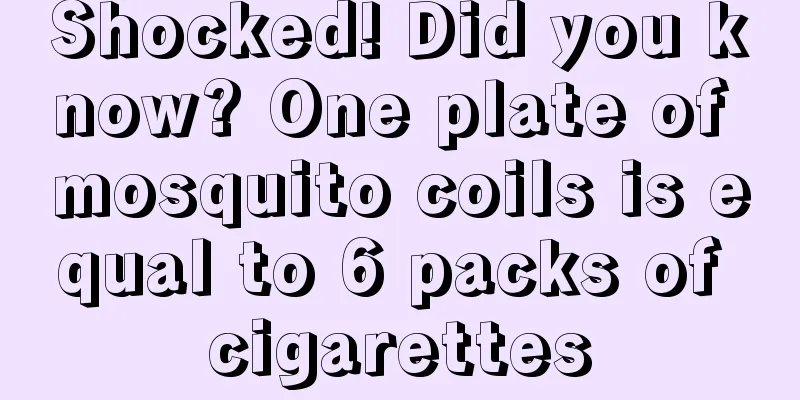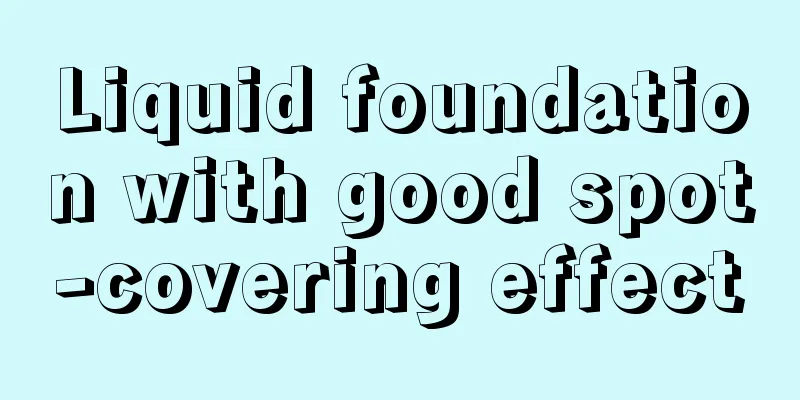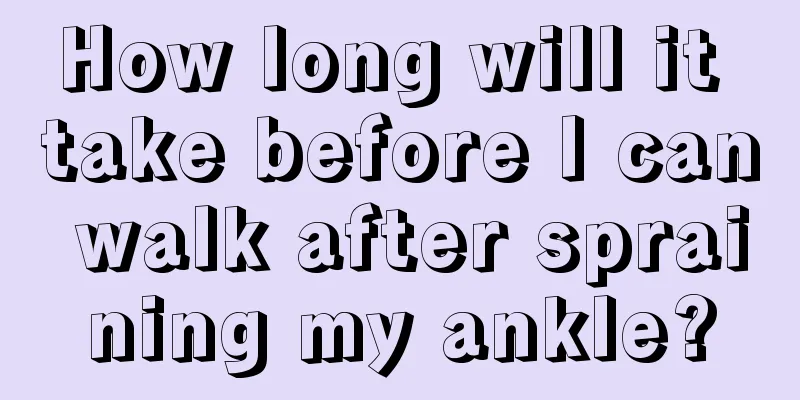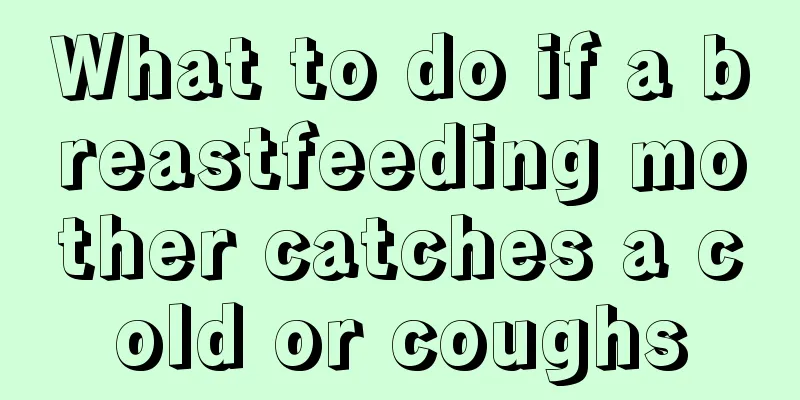Shocked! Did you know? One plate of mosquito coils is equal to 6 packs of cigarettes

|
As midsummer approaches, it is really unpleasant to be fed blood by mosquitoes every day. I wanted to use mosquito coils to pay tribute to these little creatures, but I was told that "lighting a plate of mosquito coils is equivalent to smoking 6 packs of cigarettes in a row!" Does killing mosquitoes really have such a painful price? The comparison between mosquito coils and cigarettes is not groundless. Mosquito-repellent coils are an important means of killing mosquitoes in tropical areas in summer. In recent years, there have been many studies on the harm of particulate matter and gaseous pollutants produced after burning to the human body. As both are sources of indoor air pollution and both involve a smoldering process, comparing mosquito coils and cigarettes is a common method used in this type of research (limited to the comparison of a single pollutant indicator). But when it comes to "one plate of mosquito coils is equal to six packs of cigarettes"... Whose toxicology level is so high that the toxic dose of two mixtures can be calculated so precisely? This problem is similar to converting air pollution into the number of cigarettes smoked. It ignores the complexity of the situation and is not scientific or accurate. Let’s first get to know the various substances released when burning mosquito coils.
Pyrethrins: This is the truly effective mosquito-killing ingredient in mosquito coils, a type of synthetic insecticide that simulates natural pyrethrum. It is not highly toxic to humans and has no carcinogenic or teratogenic effects. In various documents, the dose of pyrethrin released by mosquito coils is considered safe for humans. However, less than 1% of the mass of the entire mosquito coil is pyrethroids (the content in different products may vary). What is really worrying is the combustion products of the remaining more than 99% of auxiliary materials (mainly wood powder and adhesives, etc.).
PAHs: It is a type of compound that contains multiple benzene rings in its molecules. It is easily produced when plants are incompletely burned, so this type of product will appear in the smoldering process of mosquito coils and cigarettes. Some of them are highly carcinogenic, and some are suspected to be carcinogenic, so they are a class of air pollutants that are strictly controlled. Research on this type of pollutant has confirmed that the total amount of PAHs produced by burning 1 gram of mosquito coils is far less than that produced by civilian coal, firewood and incense, but is an order of magnitude larger than the PAHs in cooking fumes. Compared with another main product, cigarettes, the output of 1 gram of mosquito coils and 1 gram of tobacco is the same. A plate of mosquito coils weighs about 15 grams, which can be compared to lighting 15 cigarettes in terms of pollution indicators.
formaldehyde: This common indoor air pollutant, which usually lurks in decoration paint adhesives, can also be detected in mosquito coil smoke. Formaldehyde is irritating to human mucous membranes and is carcinogenic if inhaled for a long time. Literature shows that the amount of formaldehyde released by a plate of mosquito coils is equivalent to lighting 51 cigarettes.
Carbon Monoxide: As a product of incomplete combustion of organic matter, it can seize hemoglobin in red blood cells and prevent oxygen from combining with it. Studies have shown that smokeless mosquito coils release more carbon monoxide than smoked mosquito coils.
Benzene series: They mainly include benzene, toluene, o-xylene, p-xylene, etc. These substances are also irritating to the respiratory tract and have certain carcinogenicity. After burning mosquito coils, the content of benzene in the indoor air is close to the value of the "Indoor Air Quality Standard" (GB/T18883-2002). If the windows are opened for ventilation or the house area is large, the standard can be met, otherwise it may exceed the standard. PM2.5: The atmospheric particulate matter released by the burning of mosquito coils is mainly concentrated in the fine particle part, which is precisely the part that has the greatest impact on human health, so there are many literatures focusing on this indicator. Studies have shown that the PM2.5 released by a plate of mosquito coils is 75-137 times that of a cigarette, which is even greater than the 6 packs of cigarettes mentioned at the beginning of the article. From the above data, it can be seen that lighting mosquito coils does have a great impact on indoor air quality, but it is not scientific to simply compare a plate of incense with 6 packs of cigarettes. The pollutants released by the two pollution sources are different, and the amount of each pollutant is also different. The existing evaluation technology cannot estimate the equivalent amount of mosquito coils and cigarettes based on such data. However, it is undeniable that lighting mosquito coils does cause indoor air pollution. In addition, there is still a lack of comprehensive medical research and evaluation on the health hazards of indoor air pollution caused by mosquito coils. Smell? Get bit? Dilemma Whether to continue using mosquito coils is best judged based on the actual situation. In addition to mosquito coils, there are also mosquito nets, mosquito repellent water, electric mosquito-killing tablets and other mosquito-repellent options (for detailed mosquito-killing strategies, see: How to fight mosquitoes perfectly to the end?). If you use mosquito coils, there are also a few tips to reduce pollution:
Pay attention to ventilation when lighting mosquito coils. This helps spread pollutants, and of course, mosquitoes would hope so.
Choose smokeless mosquito coils. Except for carbon monoxide, the pollutants in smokeless mosquito coils are generally significantly less than those in smoked mosquito coils.
Use less. Given that mosquito coils have a strong ability to kill mosquitoes, you can reduce the amount of mosquito coils used according to the situation, and do not take out a whole plate and light them all at once. |
<<: 5 mistakes you should avoid when taking a summer nap
>>: Preventing skin allergies in autumn - six practical tips
Recommend
What to do when food gets stuck in your teeth? It is important to find the cause
Many middle-aged and elderly people get food stuc...
Eucommia and Drynaria wine, 4 most significant effects
Eucommia ulmoides and Drynaria fortunei wine is m...
Symptoms before death from advanced esophageal cancer
Late stage esophageal cancer means that the disea...
The main treatment methods for pancreatic cancer at different stages
Pancreatic cancer is a malignant tumor of the dig...
How to clean a water dispenser
There is usually a water dispenser at home. Water...
Are ultraviolet rays strong on cloudy days
Cloudy weather is the kind of weather where there...
Three major stomach nourishing methods have miraculous effects
There are many modern white-collar workers who su...
When I fall asleep, my throat is filled with sticky phlegm
Many people feel that their throats are blocked b...
Liver and lung metastasis of colorectal cancer
A male patient had colorectal cancer resection su...
Can a premarital check-up reveal infertility?
Having a cute and healthy baby is the common wish...
How long can you live with acute colorectal cancer
After suffering from a malignant tumor, if you wa...
The efficacy of motherwort foot bath
I think some people may be unfamiliar with Mother...
Can fresh mushrooms be refrigerated?
Mushrooms are a food ingredient with high nutriti...
Which methods can effectively treat bile duct cancer
Which methods can effectively treat bile duct can...
How long can a person with stage 2 pneumoconiosis live?
The damage caused by stage II pneumoconiosis is a...









